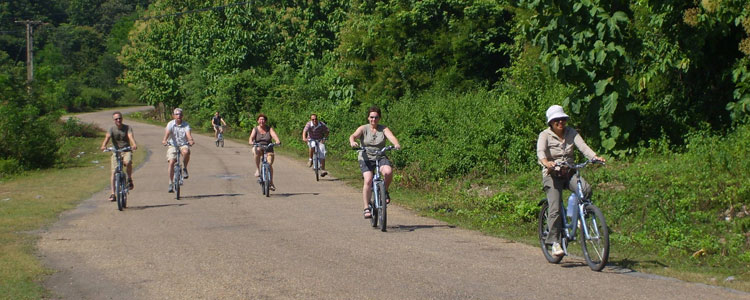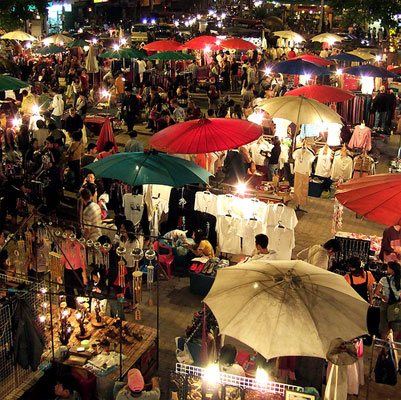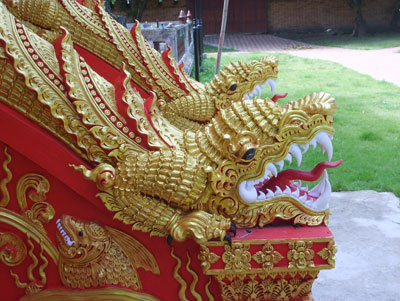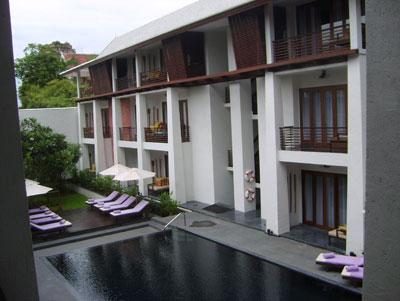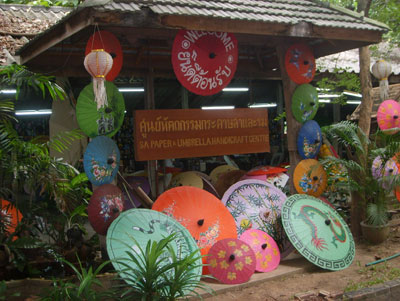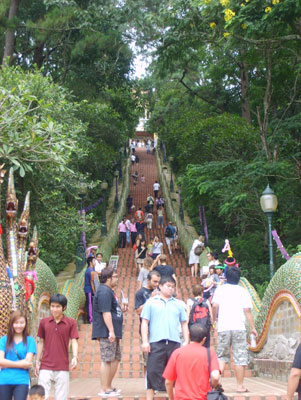Finding a superb home base in northern Thailand
by Henk Bouwman; Apeldoorn, The Netherlands
During our April ’10 trip to northern Thailand, my wife, Chanjira, and I visited the city of Chiang Mai. Located 700 kilometers north of Bangkok (a one-hour flight away), Chiang Mai is a charming and relaxed city with a pleasant climate — not as hot as Bangkok because of the elevation. There are lots of things to see and do there.
Where to stay
We spent four days at U Chiang Mai (70 Ratchadamnoen Rd.; phone +66 53 327 000, www.uchiangmai. com), a relatively small (41 rooms), intimate boutique hotel in the middle of the city. Rates for a single night’s stay range from 3,599 baht ($111) for a superior room to 4,599 baht ($142) for a deluxe room. Prices per night go down if you stay longer. (For a stay of three consecutive nights or more, nightly rates drop to 2,600 baht and 3,600 baht, respectively.)
I strongly recommend this hotel. The staff, headed by General Manager Suchada Saengarun, was extremely friendly and helpful. They spoke perfect English and made us feel at home from the moment we entered the property.
Originally, we had booked a superior room, but we were upgraded to a deluxe room on the ground floor as a reward for staying with them for the second time. Boy, did we enjoy this! Our room (No. 114) came with a semiprivate pool, so we could cool off from the heat whenever we wanted.
The room, spacious and tastfully decorated, had an en suite bathroom with a separate bath and a rain shower. There also was a very comfortable king-sized bed, a large-screen TV, a safe-deposit box and an in-room iPod docking station, so we could listen to our own music. Free WiFi Internet access was available throughout the hotel.
And, unlike at other hotels, guests have use of their rooms for a full 24 hours. If you arrive at, say, 6 p.m., your room is yours until the same time the next day.
Breakfast, lunch and dinner can be enjoyed in the hotel’s nice, bistro-like restaurant or in the privacy of your room, and a complimentary breakfast is available at all times of the day.
The hotel is built around a historical teakwood mansion in the Lanna style (typical for this part of Thailand), which includes extensive spa facilities.
The city
Chiang Mai is famous for being a city full of temples, old colonial buildings and markets. From the hotel, it was an easy walk to many of those impressive buildings.
For shoppers, the city is truly paradise. A visit to the night market should not be missed. As our stay included a Sunday, we were in for a surprise: the famous Sunday Market. This market takes place on Ratchadamnoen Road and the surroundig streets and lasts from 5 p.m. until midnight. Attracting masses of people, it is one of the liveliest and most pleasant markets I’ve ever seen.
The good thing was that our hotel, the U Chiang Mai, is right on Ratchadamnoen Road, so from there we could step right into the festive grounds. We enjoyed this market very much and could hardly refrain from buying heaps of souvenirs.
Cycling tour
As a member of U Hotels & Resorts, the hotel can help you organize area excursions. One of the things they advised us to do was take a cycling tour through the rice fields and small villages around Chiang Mai. They booked our ride with Thailand Treks (phone +66 8188 19 839, www.thailandtreks.com), and we were transferred to a small village in Doi Saket district, west of Chiang Mai, where our guide and a couple of comfortable bikes were waiting.
The ride, approximately 30 kilometers, about 99% of which was on flat, paved country roads, was very pleasant. We rode for about two hours through sleepy villages and green rice fields, stopping twice along the way — once at a small restaurant, the other time at a rural school where everyone seemed very pleased to see us.
Biking along Thai roads means that you have to comply with the local traffic rules, which includes using the left side of the road, but this was no problem for us whatsoever because there was almost no traffic at all; we got used to it quickly.
During the ride, our guide gave us information on the landscape, the living conditions of the rural people, the rice plantations, etc. After the tour we were taken to Bo Sang, locally known as “umbrella village,” in the San Kamphaeng district on the outskirts of Chiang Mai. It was a cute little place where most of the people produce paper fans, parasols and umbrellas — big and small and nicely decorated with floral motifs.
We visited several of the workshops and admired the skills of the craftsmen and the beautiful decorations, mostly done by women. We decided to buy a nicely decorated fan and a small umbrella to take home as souvenirs.
We paid $36 per person for this bicycle excursion, inclusive of transfers, bicycle rental, English-speaking guide, soft drinks, lunch and accident insurance.
Doi Suthep temple complex
One of the highlights of the Chiang Mai region is the Doi Suthep temple complex, offically called Wat Phrathat Doi Suthep. Although we had been there before, we very much wanted to revisit this highly romantic place located high up in the hills, 15 kilometers north of the city.
At 9 a.m., Thailand Treks took us to this famous place, where we enjoyed the magnificent temples, pagodas, statues and bells as well as the superb view over Chiang Mai and the surrounding countryside.
To reach the top of the temple mountain, you can choose to take the staircase or the elevator. We took the staircase, as we found it a more appropriate way to reach this holy place, an important pilgrimage destination for Buddhists. With 309 steps, it was quite a strenuous job to climb all the way to the top, but we were happy to do so knowing what we would find there.
After an extensive visit, we were transferred to a small mountain village inhabited by indigenous people of the Hmong tribe. We walked the village’s sandy streets and were invited to have a look into the home of one of the tribemembers.
My wife was especially excited about the colorful dress of the women, decorated with magnificent embroidery and silver jewelry. The production of needlework is one of the sources of income there.
Our tour ended in the town of San Kamphaeng, near Bo Sang. This very busy place has lots of stores and showrooms along the main road, where all kinds of handicrafts are demonstrated and sold, including jewelry and furniture. It was an interesting place but a bit too busy for our liking.
By 4:30 p.m. we were back in the hotel. The excursion cost $44 per person.
Riverside dining
In Chiang Mai, dining options are plentiful. The restaurant we liked best, The Riverside (9-11 Charoenrat Rd; www.theriversidechiangmai.com), was one of the small, simple, open-air restaurants on the banks of the Ping River, which meanders south of the city center. The place was full of locals, which is always a good sign, and the location was superb, the city lights reflected on the dark water with a starry sky above.
After Mai Tai cocktails, we had crunchy spring rolls in sweet and sour sauce followed by barbecued prawns, tom kha gai (a spicy chicken-and-coconut milk soup) with white rice and condiments, and mango with sticky rice for dessert. We were astonished by the low prices. Our meal cost no more than $10 per person, with tip.
The tuk tuk driver who took us there, Piti Pibulsakkul (a nice guy who drives very carefully; if you want to make use of his services, just phone 089 4419650), had been patiently waiting outside the restaurant. He took us back to the hotel, where we ended the evening with a glass of wine on our private terrace.
This wasn’t our last visit to Chiang Mai, that’s for sure, because we like this place so much. The same goes for U Chiang Mai, which is a real gem.

